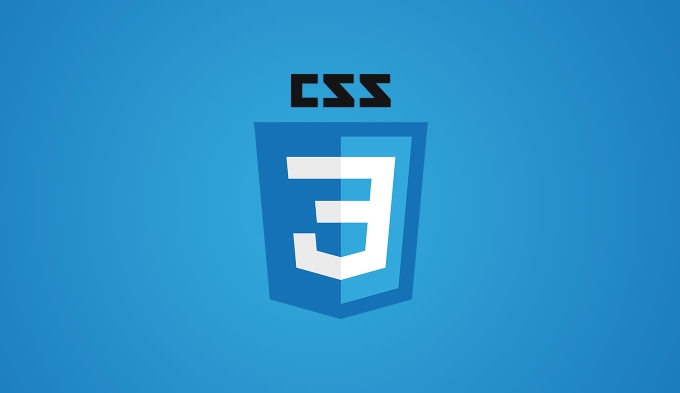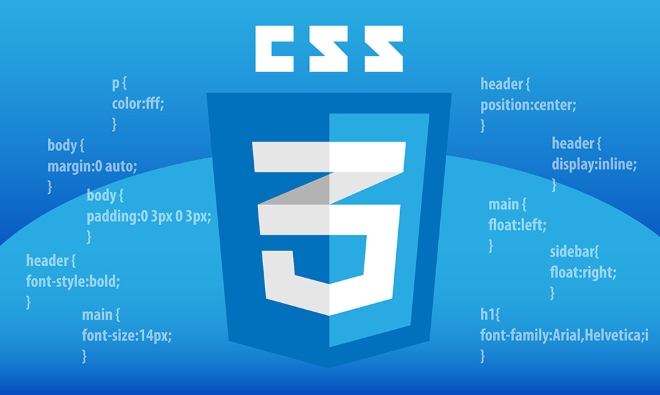clip-path is an attribute in CSS to create shapes and mask effects without pictures or extra HTML elements. 1. It displays part of the element by defining the crop area, commonly used preset shapes such as circle(), ellipse(), inset() and polygon(); 2. Polygons use polygon() function to define complex shapes through coordinate points, suitable for trapezoids, arrows and other designs; 3. SVG paths can be cited to achieve more advanced cropping, and you need to master the path data format; when using actual application, you need to pay attention to compatibility, performance impact, responsive adaptation and debugging difficulty. It is recommended to combine visualization tools to improve efficiency.

To put it directly, the key point: CSS's clip-path property can easily create various shapes and mask effects without relying on images or additional HTML elements.

What is clip-path ?
clip-path is a CSS property that allows you to display part of an element by defining a clipping area. Content beyond this area will be hidden. This feature is very suitable for creating visual effects such as irregular shapes, triangles, polygons, etc.

You can use preset shape functions such as circle() , polygon() or inset() , or reference the SVG path to do more complex cropping. Common uses include making graphic containers, animation masks, or making web pages look more designed.
Common ways to use clip-path
1. Base shape: round, oval, rectangle cut
.element {
clip-path: circle(50% at 50% 50%);
}-
circle(50%)means that the radius is half of the container, and the center point is the middle by default. - If you want to adjust the position, you can use
at xyto specify the center point. For example,circle(30% at 70% 50%)is a small circle that is on the right.
Use ellipse() for ellipse, and use inset() for rectangle cropping:

clip-path: inset(10% 20% 30% 40%);
This means that 10%, 20%, 30%, and 40% are cut out from top, bottom, left and right respectively.
2. Polygons: Customize complex shapes
If you want to make irregular shapes such as trapezoids, pentagrams, arrows, etc., polygon() is the most commonly used tool.
clip-path: polygon(50% 0%, 100% 50%, 50% 100%, 0% 50%);
The above example will generate a diamond. The parameters are coordinate points, which are connected in order to form a closed figure.
Tip: You can use online tools (such as Clippy) to visually generate polygon parameters to avoid manually calculating coordinates.
3. Use SVG path for advanced cropping
If you already have SVG graph path data, you can call it directly in CSS:
clip-path: path('M 0 0 L 100 0 L 50 100 Z');
This method is suitable for very complex shapes, but requires some knowledge of SVG paths.
Things to note in practical applications
- Compatibility : All mainstream browsers support it, but it may not be displayed properly on older IEs.
- Performance Impact : Complex shapes may slightly affect rendering performance, especially for large numbers of elements or animations.
- Responsive problem : If the shape is positioned based on percentage, it can be automatically adapted when the window size changes; but if a fixed pixel value is used, it may need to be adjusted in conjunction with media query.
- Debugging difficulty : When there are too many
polygon()points, it is difficult to see the shape intuitively. It is recommended to use visualization tools to assist.
Conclusion
It is actually not difficult to make shapes and masks with clip-path . The key is to understand the parameters of different functions and master some coordinate logic. Start trying out with simple shapes and slowly transitioning to complex graphics, and you will find that it can bring a lot of interesting visual changes to the page. Basically that's all, let's try it!
The above is the detailed content of Creating shapes and masks with CSS clip-path. For more information, please follow other related articles on the PHP Chinese website!

Hot AI Tools

Undress AI Tool
Undress images for free

Undresser.AI Undress
AI-powered app for creating realistic nude photos

AI Clothes Remover
Online AI tool for removing clothes from photos.

Clothoff.io
AI clothes remover

Video Face Swap
Swap faces in any video effortlessly with our completely free AI face swap tool!

Hot Article

Hot Tools

Notepad++7.3.1
Easy-to-use and free code editor

SublimeText3 Chinese version
Chinese version, very easy to use

Zend Studio 13.0.1
Powerful PHP integrated development environment

Dreamweaver CS6
Visual web development tools

SublimeText3 Mac version
God-level code editing software (SublimeText3)

Hot Topics
 What is 'render-blocking CSS'?
Jun 24, 2025 am 12:42 AM
What is 'render-blocking CSS'?
Jun 24, 2025 am 12:42 AM
CSS blocks page rendering because browsers view inline and external CSS as key resources by default, especially with imported stylesheets, header large amounts of inline CSS, and unoptimized media query styles. 1. Extract critical CSS and embed it into HTML; 2. Delay loading non-critical CSS through JavaScript; 3. Use media attributes to optimize loading such as print styles; 4. Compress and merge CSS to reduce requests. It is recommended to use tools to extract key CSS, combine rel="preload" asynchronous loading, and use media delayed loading reasonably to avoid excessive splitting and complex script control.
 External vs. Internal CSS: What's the Best Approach?
Jun 20, 2025 am 12:45 AM
External vs. Internal CSS: What's the Best Approach?
Jun 20, 2025 am 12:45 AM
ThebestapproachforCSSdependsontheproject'sspecificneeds.Forlargerprojects,externalCSSisbetterduetomaintainabilityandreusability;forsmallerprojectsorsingle-pageapplications,internalCSSmightbemoresuitable.It'scrucialtobalanceprojectsize,performanceneed
 Does my CSS must be on lower case?
Jun 19, 2025 am 12:29 AM
Does my CSS must be on lower case?
Jun 19, 2025 am 12:29 AM
No,CSSdoesnothavetobeinlowercase.However,usinglowercaseisrecommendedfor:1)Consistencyandreadability,2)Avoidingerrorsinrelatedtechnologies,3)Potentialperformancebenefits,and4)Improvedcollaborationwithinteams.
 CSS Case Sensitivity: Understanding What Matters
Jun 20, 2025 am 12:09 AM
CSS Case Sensitivity: Understanding What Matters
Jun 20, 2025 am 12:09 AM
CSSismostlycase-insensitive,butURLsandfontfamilynamesarecase-sensitive.1)Propertiesandvalueslikecolor:red;arenotcase-sensitive.2)URLsmustmatchtheserver'scase,e.g.,/images/Logo.png.3)Fontfamilynameslike'OpenSans'mustbeexact.
 What is Autoprefixer and how does it work?
Jul 02, 2025 am 01:15 AM
What is Autoprefixer and how does it work?
Jul 02, 2025 am 01:15 AM
Autoprefixer is a tool that automatically adds vendor prefixes to CSS attributes based on the target browser scope. 1. It solves the problem of manually maintaining prefixes with errors; 2. Work through the PostCSS plug-in form, parse CSS, analyze attributes that need to be prefixed, and generate code according to configuration; 3. The usage steps include installing plug-ins, setting browserslist, and enabling them in the build process; 4. Notes include not manually adding prefixes, keeping configuration updates, prefixes not all attributes, and it is recommended to use them with the preprocessor.
 What are CSS counters?
Jun 19, 2025 am 12:34 AM
What are CSS counters?
Jun 19, 2025 am 12:34 AM
CSScounterscanautomaticallynumbersectionsandlists.1)Usecounter-resettoinitialize,counter-incrementtoincrease,andcounter()orcounters()todisplayvalues.2)CombinewithJavaScriptfordynamiccontenttoensureaccurateupdates.
 CSS: When Does Case Matter (and When Doesn't)?
Jun 19, 2025 am 12:27 AM
CSS: When Does Case Matter (and When Doesn't)?
Jun 19, 2025 am 12:27 AM
In CSS, selector and attribute names are case-sensitive, while values, named colors, URLs, and custom attributes are case-sensitive. 1. The selector and attribute names are case-insensitive, such as background-color and background-Color are the same. 2. The hexadecimal color in the value is case-sensitive, but the named color is case-sensitive, such as red and Red is invalid. 3. URLs are case sensitive and may cause file loading problems. 4. Custom properties (variables) are case sensitive, and you need to pay attention to the consistency of case when using them.
 What is the conic-gradient() function?
Jul 01, 2025 am 01:16 AM
What is the conic-gradient() function?
Jul 01, 2025 am 01:16 AM
Theconic-gradient()functioninCSScreatescirculargradientsthatrotatecolorstopsaroundacentralpoint.1.Itisidealforpiecharts,progressindicators,colorwheels,anddecorativebackgrounds.2.Itworksbydefiningcolorstopsatspecificangles,optionallystartingfromadefin






